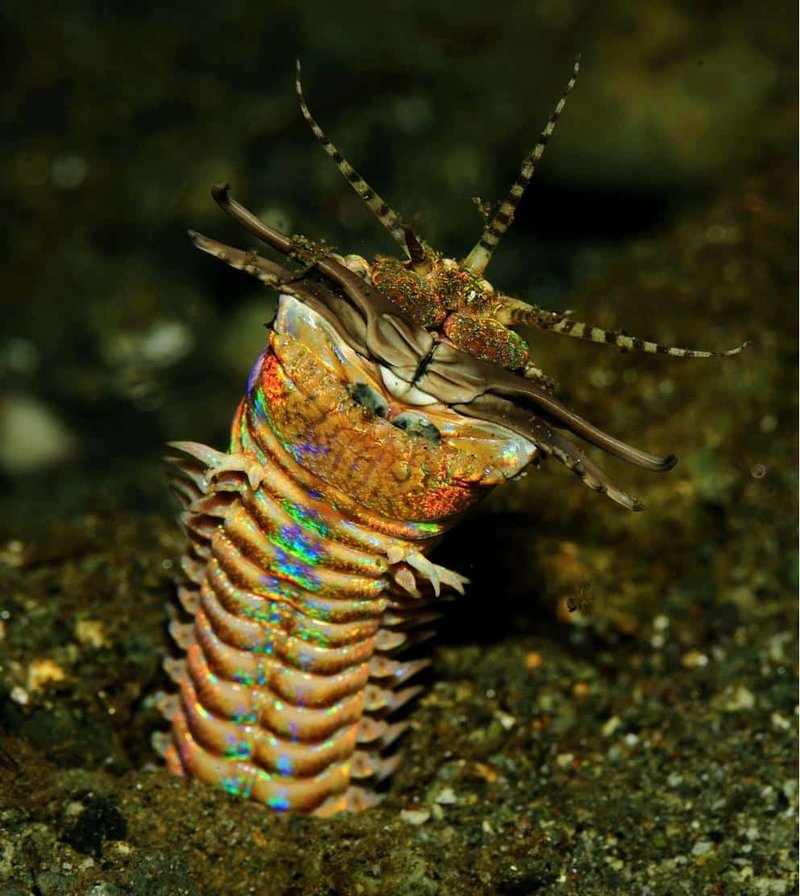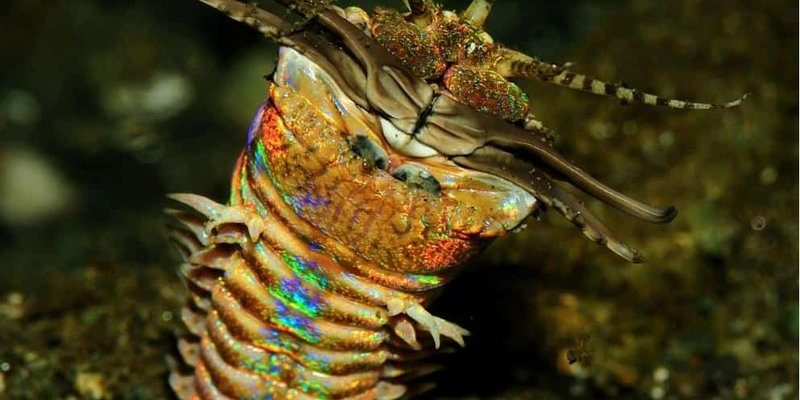
Images of the Bobbit worm act as a bridge, allowing educators to engage students in topics surrounding marine biology, ecosystems, and biodiversity. Think of it like using a compelling photo to spark a conversation. Just as a beautiful landscape can captivate an audience, a striking image of a Bobbit worm can pique curiosity and encourage discussions about its habits, environments, and role in the ecosystem. Let’s dive deeper into how these images are used in marine education.
Why Bobbit Worm Images Matter in Marine Education
When it comes to teaching marine science, visuals are incredibly powerful. Images of the Bobbit worm can serve as a visual aid that makes complex concepts easier to understand. Here’s the thing: seeing a photo of a Bobbit worm in its natural habitat can ignite interest in marine ecosystems.
Additionally, these images help students visualize animal adaptations. For instance, the Bobbit worm uses its vibrant colors to camouflage among corals. This is a perfect example of natural selection and can lead to discussions about how species evolve to survive in their environments. By showcasing its unique features, educators can effectively convey the importance of biodiversity and the varying roles different organisms play in their ecosystems.
So, what’s the practical takeaway here? Using Bobbit worm images allows instructors to create immersive learning experiences that resonate with students, potentially inspiring future marine biologists or conservationists.
How to Use Bobbit Worm Images in Classrooms
Integrating Bobbit worm images into lesson plans isn’t as tricky as it sounds. You might be wondering how to even begin. Here are some practical ideas:
- Visual Presentations: Incorporate eye-catching images in slide decks. Highlight interesting facts about the Bobbit worm’s habitat, behavior, and diet.
- Interactive Activities: Use images for identification games. Students can match pictures of the Bobbit worm with other marine species.
- Art Projects: Encourage students to create their interpretations of the Bobbit worm. This not only solidifies their learning but also stimulates creativity.
By using these methods, you can create engaging sessions that keep students invested in learning about marine life. When students see the Bobbit worm, they’re not just looking at a photo—they’re discovering the incredible diversity of life beneath the waves!
Incorporating Technology with Bobbit Worm Images
Advancements in technology have revolutionized how we teach. For instance, virtual reality (VR) can offer immersive experiences where students can “explore” underwater habitats. By integrating Bobbit worm images into VR models, learners can witness firsthand how these creatures interact with their environment.
There are also countless educational websites and apps that provide high-quality images. These platforms often include detailed descriptions, fun facts, or even videos of the Bobbit worm in action. By encouraging students to explore these resources, you’re empowering them to take charge of their learning. Honestly, it adds a level of fun and exploration to the classroom that digital natives crave.
Moreover, using social media, like Instagram or educational YouTube channels, can enhance engagement. When students see real-life footage of the Bobbit worm, the connection to marine education becomes more personal. It morphs from a textbook definition into a vibrant, living concept.
Bobbit Worms and Ecosystem Balance
While Bobbit worms might seem like just bizarre and colorful creatures, they play a crucial role in their ecosystem. They are carnivorous and use their sharp jaws to catch prey, which can include fish and other small marine animals. This behavior helps maintain a balance within the marine food web.
Educators can use Bobbit worm images to spark discussions about food chains and the interconnectedness of ocean life. When students visualize how the Bobbit worm captures its prey, it leads to more profound discussions about predator-prey relationships and the delicate balance necessary for thriving marine environments.
The Bobbit worm also provides valuable insights into the health of coral reefs. Observing these creatures can indicate the overall well-being of their habitat. This becomes a great conversation starter about conservation efforts and why protecting marine ecosystems matters.
Real-Life Examples of Bobbit Worms in Education
Incorporating Bobbit worm images isn’t just theory; real educators use these techniques successfully. For instance, a high school marine biology teacher might present a slideshow with images of the Bobbit worm interspersed with photos of its habitat, such as coral reefs. Each image prompts a discussion about the specific features of the worm and its ecosystem.
College professors, too, might use detailed images in research projects to illustrate their points about marine biodiversity. Imagine a group of students researching the impact of ocean pollution on different species. A powerful image of a Bobbit worm can serve as a striking reminder of what’s at stake in our oceans.
Field trips to aquariums or marine research centers can also incorporate Bobbit worms. Students can see these creatures up close and personal. When they witness the worm’s unique movement and behavior, it solidifies their understanding of the material in a way that mere text never could.
Challenges and Solutions in Using Bobbit Worm Images
Like any teaching method, there are challenges in using Bobbit worm images for marine education. For instance, finding high-quality images or resources can sometimes pose a problem. Many images might lack the necessary detail to facilitate effective learning.
However, the solution is simpler than it sounds. There are numerous online databases and educational platforms with quality content. Websites like Wikimedia Commons or educational organizations often have licensed images available for use. To ensure you find the best images, look for those that come with detailed descriptions or context.
Another challenge might be the students’ initial reactions. Some may find the Bobbit worm’s appearance unappealing, which could hinder engagement. Here’s where storytelling comes in. Sharing interesting facts about the Bobbit worm’s unique adaptations can help shift perspectives, sparking curiosity rather than disgust.
Incorporating Bobbit worm images into marine education is a fantastic way to engage students and kickstart their passion for marine life. From creating immersive lesson plans to utilizing technology, the possibilities are endless. These images do more than just decorate a classroom—they open the door to conversations about biodiversity, environmental conservation, and the delicate balance of ecosystems.
When students can visualize creatures like the Bobbit worm, it fosters a connection that goes beyond textbooks. It encourages them to explore, ask questions, and ultimately care about the underwater world. So, next time you’re planning a marine education session, don’t forget to showcase those captivating Bobbit worm images! They might just inspire the next generation of ocean protectors.

